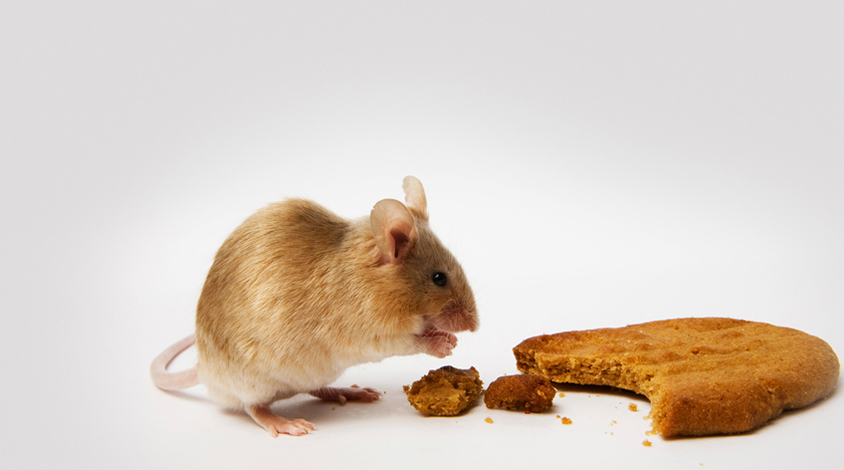
Reward protein may protect females from autism mutation
Female mice with a large deletion linked to autism may compensate for its loss by upping the levels of a key protein.
Female mice with a large deletion linked to autism may compensate for its loss by upping the levels of a key protein. Male mice with the same deletion do not show this compensation.
The findings, presented yesterday at the 2016 Society for Neuroscience annual meeting in San Diego, suggest a possible mechanism for a female protective effect in autism.
The protein in question, ERK1, has wide-ranging functions, including a role in the reward response. ERK1 is one of 27 genes in the 16p11.2 chromosomal region. The mice in the study carry a deletion of one copy of this region. People with this deletion have a range of features including intellectual disability and, sometimes, autism.
Previous studies have explored sex differences in the effects of this deletion: For example, male mice with the deletion sleep less than controls do, whereas females have no trouble sleeping1.
In the new study, the researchers focused on how the mice seek out a reward. In the first part of the experiment, they set up a simple Pavlovian test: A light in the cage signals that a chute will release a treat eight seconds later.
Seeking reward:
All of the mice make this association quickly, racing to the chute to wait for their reward.
In the second part, the researchers stop the automatic reward. When the light goes on, the mice must go to the opposite end of the cage from the chute and poke their noses into one of nine holes to get the reward. Control mice adapt to this change over the course of a few days, although males and females seem to learn it differently.
The males thoroughly explore their environment, poking into all the holes until they find the correct one. Female mice, by contrast, at first spend time checking and rechecking the chute but ultimately learn to go to the new location.
Female mice with the 16p11.2 deletion behave similarly to female controls. But male mice with the deletion don’t use either of the typical learning strategies and take much longer than the other groups to adapt to the change. Even after they learn, they have trouble adjusting when the researchers require more pokes into a hole before it yields a treat.
The results suggest that the mutant male mice have no trouble learning basic associations but struggle to understand how to control their environment, says Nicola Grissom, assistant professor of psychology at the University of Minnesota, who presented the work. “When it comes to understanding how their own actions affect the environment, that seems to be impaired,” she says.
Female protection:
The researchers then looked at the levels of all 27 genes in the 16p11.2 region. They looked in particular at the striatum, a brain region that mediates reward. The levels of the RNA template for these proteins drops to roughly half of normal in both male and female mice.
In the case of ERK1, male mice with the deletion make about half as much of the protein as controls do, as expected from the gene and RNA levels. But female mice have about 75 percent of the normal level of ERK1. This might be because the females make more ERK1 from the RNA template or simply keep the protein they do make around longer, Grissom says.
“How the female brain is able to compensate at a protein level but not at an RNA level is a much weirder and more interesting problem,” Grissom says.
Preliminary findings suggest that male mice with the deletion also activate more ERK1 in the striatum in response to reward than female mice do. This activation may make the striatum less likely to adapt to experience. ERK1 activation spikes in mutant males compared with those in both typical males and mutant females.
Grissom and her team plan to look for sex differences in mice that carry other autism-associated mutations. Preliminary data suggest that sex differences manifest only for certain mutations and not others.
For more reports from the 2016 Society for Neuroscience annual meeting, please click here.
References:
- Angelakos C.C. et al. Autism Res. Epub ahead of print (2016) PubMed
Recommended reading

New organoid atlas unveils four neurodevelopmental signatures
Explore more from The Transmitter

The Transmitter’s most-read neuroscience book excerpts of 2025

Neuroscience’s leaders, legacies and rising stars of 2025


